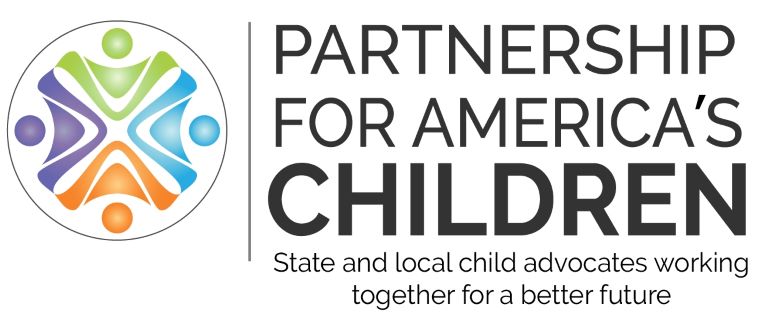Illinois’ Tax System Widening Inequality
A new report by the Institute on Taxation and Economic Policy (ITEP) shows Illinois has the eighth most regressive state and local tax system in the country. A regressive tax system is one where low- and middle-income families pay a larger share of their incomes in taxes than upper-income families. In Illinois, households with the lowest 20% of incomes (less than $26,700) pay 14.8% of their income in taxes while the top 1% (over $749,400) pay just 7.3% of their income in taxes. The ITEP study documents that Illinois has the second-highest tax rate for the lowest 20% of household incomes. The average effective local and state tax rate in the U.S. for the lowest 20% of household incomes is 11.3%.

A regressive system not only widens economic disparities but has implications with regard to the racial and ethnic wealth gaps. In 2022, white/non-Latinx Illinois households already had a median income that was more than 78% higher than Black Illinois households ($80,404 vs $45,019). The median income level for Latinx Illinois households was $72,139. Consequently, when you factor in the ITEP analysis of tax burdens by income, the state has in place a tax system that puts a greater burden, on average, on Black and Latinx households than white/non-Latinx households.
This also has implications for the well-being of our state’s children where the 2022 child poverty rate for Black Illinois children is four times that of white/non-Latinx Illinois children (9.0% vs 36.1%) and the child poverty rate for Latinx children (18.7%) is more than twice the rate for white/non-Latinx children.

The ITEP study shows that 41 states tax the top 1% (by income) at a lower rate than any other income group. States with tax systems that reduce inequality are California, Maine, Minnesota, New Jersey, New York, and Vermont.
The majority of states with the ten most regressive tax systems either have no broad-based income tax or a flat-rate personal income tax (such as in Illinois). The Illinois Constitution states:
A tax on or measured by income shall be at a non-graduated rate. At any one time, there may be no more than one such tax imposed by the State for State purposes on individuals and one such tax so imposed on corporations.
In 2020, Illinois voters turned down a proposed change to that section of the state constitution that would have allowed a progressive income tax.
Progressive income tax rates, seen in all the least regressive state and local tax systems, as well as refundable tax credits (where a taxpayer can receive a refund check for the value of any tax credit that exceeds the tax liability of the filer) can help offset the impact of sales, excise, and property taxes, which tend to be regressive. Due to their financial situation, low-income families spend more of their income and save less than higher-income families. As a result, more of their income is subject to sales taxes that are imposed at a flat rate.
The regressive nature of sales taxes is compounded when the taxes apply to essential items for low-income households. While lower than the general tax rate of 6.25%, Illinois taxes groceries at a 1% rate.
According to the Center on Budget and Policy Priorities, Illinois is one of only a dozen states that as of last fall taxed groceries.[1] The state suspended the tax from July 1, 2022, through June 30, 2023, to help families deal with higher grocery prices during a time of high inflation. At a February 4, 2022 press conference touting the proposed tax, Governor J.B. Pritzker stated: The grocery tax is really one of the most regressive taxes, and because we have balanced our budget, and we have a surplus in Illinois, this is a straightforward way for us to help residents who need it most.[2]

Illinois also taxes relatively few services versus tangible items. A 2017 survey by the Federation of Tax Administrators listed Illinois as taxing 29 services, while Kentucky taxed 40, Wisconsin 82, and Iowa 89.[3]

2021 study by Dartmouth Professor Diego Comin and his colleagues showed that wealthier consumers spend more on services and less on agriculture and manufactured goods.[4] In addition, services contributed 77.6% of the nation’s Gross Domestic Project in 2021.[5] Consequently, it appears that taxing fewer services benefits higher-income households.
In reference to property taxes, Illinois had some of the highest property taxes in the country in 2021.[6] Part of that is the result of the reliance local school districts place on the tax for operating revenue. While Illinois began adding an additional $350 million per year in state funding to the evidence-based school aid formula in 2018, local revenues still made up more than half of the school districts’ total revenue.[7]

Assessment exemptions for general homestead, veterans, the disabled, and seniors help reduce the distribution of the tax burden on some households. The state also allows income tax filers whose income does not exceed $250,000 (individually and $500,000 for married filing jointly), to take a tax credit of 5% of the filer’s property tax bill. However, that same relief is not available to renters – who are disproportionately individuals of color. Frequently, even with the property tax credit, renters pay a portion of the property taxes in their rent payments. A review of housing payments by the National Low-Income Housing Coalition shows that 86.4% of extremely low-income renter households in Illinois (0-30% of the Average Median Income) spend more than 30% of their income on housing.[8]
Remedies:
While changing the state’s personal income tax rates would require a constitutional amendment, state legislators can enact two short-term measures to provide greater economic security to Illinois families.
ITEP reports that all 10 of the states with the most equitable tax systems offer refundable state Earned Income Tax Credits (EITC) and nine of the 10 have refundable Child Tax Credits (CTC). Illinois has a state EITC (valued in Tax Year 2024 at 20% of a taxpayer’s claimed federal EITC) but not a CTC. Children’s Advocates for Change strongly supports the adoption of this measure to help working families deal with the additional costs of raising children. The credit can help low- and moderate-income families with food insecurity, rising rent, dental care, transportation costs, and a host of other needed goods and services. It’s also good for the local economies as credit recipients purchase necessary items for their households.
Another means of assisting with rising rental costs is the adoption of an income tax credit for renters. Statistics from the National Low Income Housing Coalition show that in 2023 Illinois had only 34 affordable and available homes for rent for every 100 households at or below 30% of the Average Median Income level and only 65 affordable and available homes for rent for every 100 households between 31% and 50% of the Average Median Income level.[9] While the state has adopted new incentives in recent years for the construction of affordable housing, a housing credit follows the renter. Consequently, it can assist with paying for rental units closer to employment locations (which also helps reduce transportation costs). It also helps promote greater housing stability. Housing instability can have a significant impact on children as they move from one school district to another.
These steps can be taken in the short term and would provide greater economic security for working families. In the long term, it may be necessary to look at Illinois’ income tax rates as well as the structure of the state’s income tax system. A November 15, 2023 Economic and Fiscal Policy Report from the Governor’s Office of Management and Budget projects -based on current taxes and expenditure patterns – a Fiscal Year 2025 (7/1/24-6/30/25) $721 million General Fund deficit ($891 million after an additional contribution to the Budget Stabilization Fund). That deficit grows through Fiscal Year 2028.[10]

In examining the income tax structure, it is also important to recognize that Illinois does not tax 401(K), retirement, pension, and social security benefits that the federal government taxes. The Fiscal Year 2021 Tax Expenditure Report from the Illinois Comptroller, which documents the value of Illinois tax credits and exemptions, shows that Illinois lost almost $2.9 billion in tax revenue due to these exemptions. Unlike the property tax credit, income is not a determining factor in these exemptions.
In the short and the long term, it is important for Illinois residents and our elected officials to look at changes to the overall state and local tax system to make it more progressive. Doing so will make the system more equitable with regards to household income, race, and ethnicity. It will also help ensure that all children and their families thrive.
Written by Mitch Lifson
[1] https://www.cbpp.org/12-states-impose-sales-tax-on-groceries
[2] https://wmbdradio.com/2022/02/04/pritzker-speaks-on-proposed-grocery-sales-tax-suspension-calls-out-republicans/
[3] https://taxadmin.org/state-taxation-of-services-by-category-2017/; 2017 is the last available survey from the FTA. Changes may have occurred since then.
[4] https://home.dartmouth.edu/news/2021/03/new-study-finds-income-not-prices-drives-economy
[5] https://www.statista.com/statistics/270001/distribution-of-gross-domestic-product-gdp-across-economic-sectors-in-the-us/
[6] https://taxfoundation.org/data/all/state/property-taxes-by-state-county-2023/
[7] https://www.nea.org/sites/default/files/2022-06/2022%20Rankings%20and%20Estimates%20Report.pdf
[8] https://nlihc.org/sites/default/files/SHP_IL.pdf
[9] https://nlihc.org/sites/default/files/SHP_IL.pdf
[10] https://budget.illinois.gov/content/dam/soi/en/web/budget/documents/economic-and-fiscal-policy-reports/Economic%20and%20Fiscal%20Policy%20Report%20FY24%20FINAL%2011.15.23.pdf



